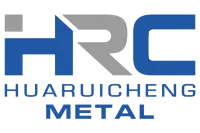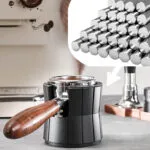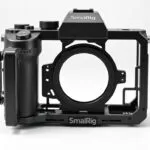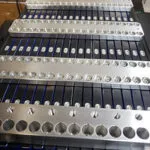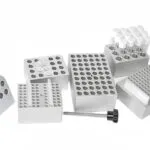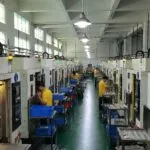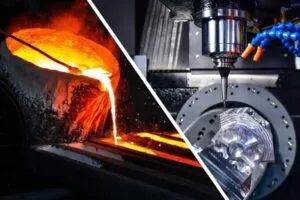In the fast-paced world of CNC machining service, safety is key, especially with aluminum parts. Aluminum’s unique properties require a careful approach to safety. This guide will cover important safety steps for every manufacturing pro.
Knowing these steps helps you make top-notch products safely. We’re all about mastering machining and keeping our work area safe.
Key Takeaways
- CNC machining service demands strict adherence to safety precautions.
- Understanding aluminum’s properties is crucial for machining safety.
- Implementing effective metal fabrication processes reduces risk.
- Training and awareness play vital roles in maintaining a safe environment.
- Regular maintenance of tools enhances overall machining safety.
- Creating a structured work environment supports safe practices.
Understanding CNC Machining for Aluminum Parts
CNC machining has changed the way we make aluminum parts. It uses computer control for high accuracy. Aluminum is great because it’s light and doesn’t rust easily.
CNC works by combining computer software with machines. The software, like CAD, designs the parts. Then, the machines make these designs real.
Aluminum’s special qualities help CNC machining. It’s good at conducting heat and easy to work with. This means faster making and less tool wear.

Using CNC for aluminum makes complex designs easier. It keeps quality high. Knowing CNC is key for making top-notch aluminum parts.
Importance of Safety in CNC Machining
Safety in CNC machining is a key part of the manufacturing world. It’s vital to have strict safety rules to protect employee protection and keep products quality high. A safe place to work makes things better and products more reliable.
Workplace injuries are a big problem in manufacturing. This shows how safety importance is. If we ignore safety, we face big costs, legal issues, and unhappy workers.
Good manufacturing safety practices can lower accident risks. Training and safety talks help everyone see safety as a team effort. This makes everyone more likely to follow safety rules.
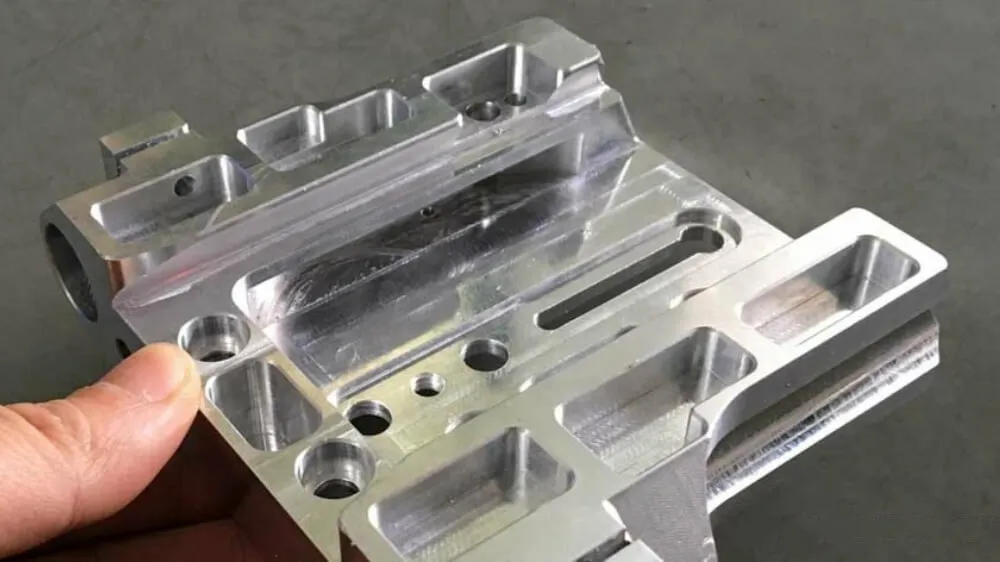
Being serious about safety makes our work better. When we put employee protection first, we keep our team safe and improve how we make things. This builds trust and confidence with everyone involved.
What Safety Precautions Are Needed in CNC Machining Service for Aluminum Parts?
When we use CNC machining service for aluminum parts, safety is key. We need to know the risks of aluminum machining to keep our work area safe. It’s important to carefully check these risks to protect our workers and follow safety rules.
Evaluating Risk Factors in Aluminum Machining
Aluminum machining comes with some risks. These include:
- Exposure to sharp tools that can cause cuts and lacerations.
- Flying metal particles that may lead to eye injuries.
- Potential chemical hazards related to cutting fluids and lubricants.
By understanding these risks, we can prepare our teams to face dangers safely.
Implementing Proper Protective Equipment (PPE)
Personal protective equipment (PPE) is crucial in CNC machining. It includes:
- Safety goggles to protect against flying debris.
- Cut-resistant gloves to shield hands from sharp edges.
- Respirators to address exposure to harmful vapors.
Using the right PPE keeps our machinists safe. It also shows our dedication to safety in CNC machining service.
Choosing the Right Tools for Aluminum Machining
Choosing the right cutting tools for aluminum machining is key to getting top-notch results. The tools you pick affect how efficient, productive, and safe your machining process is. People working in CNC machining need to know about the different tools available to find the best ones for their tasks.
Types of Cutting Tools for Aluminum
There are many cutting tools made just for machining aluminum. Here are some of the most common ones:
- High-Speed Steel (HSS) Tools: Known for their toughness and flexibility, HSS tools are great for most aluminum machining jobs.
- Carbide Tools: These tools are very hard and resistant to wear, making them perfect for tough jobs and faster production.
- Coated Tools: Tools with coatings like TiN or TiAlN work better because they reduce friction, help chips flow, and last longer.
- Specialty Cutters: Tools like end mills or face mills are made just for aluminum. They remove material efficiently and leave a smooth finish.
Importance of Tool Maintenance
Keeping your cutting tools in good shape is essential for effective aluminum machining. Here’s why:
- Sharpening your tools often keeps them working well and makes them last longer.
- Changing out old or broken tools stops problems that could cause accidents and bad part quality.
- Regular maintenance cuts down on downtime and makes your CNC machining service more efficient.
- Storing and handling tools right helps keep them in top condition and performance.
Work Environment Setup for Safe Aluminum Machining
Setting up a well-organized work area is key for safe CNC machining. It should have good ventilation, enough light, and clear signs. This makes the space safer and more efficient. A clean area helps workers move around without accidents.
Some basic things make a good work environment include:
- Ventilation: Make sure there’s enough air to clear out fumes and dust from machining.
- Lighting: Bright, focused lights help machinists see better, cutting down on mistakes.
- Signage: Post clear signs about safety rules, emergency exits, and dangers around the area.
Organizing machines and tools well is also important for safety. Here’s how to set up your space:
- Put machines in areas where people don’t walk by much to avoid crashes.
- Keep tools in their places to avoid confusion and make them easy to find.
- Have a regular cleaning schedule to keep the area clean and free of clutter.
Following these tips helps create a safe work environment for machining. Focusing on safety in our CNC setup means better results, higher quality, and fewer accidents.
Material Handling and Safety Practices
Effective material handling is key to a safe work environment in CNC machining. This part talks about safe ways to load and unload aluminum parts. It also stresses the need for proper storage to avoid accidents and improve workflow.
Safe Loading and Unloading of Aluminum Parts
Ensuring safe handling of aluminum parts is crucial. Right techniques prevent injuries and keep materials in good shape. Important steps include:
- Assessing Weight Distribution: Spread weight evenly to avoid strain and ensure stability.
- Utilizing Mechanical Aids: Use forklifts or hoists for lifting heavy parts, reducing manual effort.
- Communicating Clearly: Use clear signals among team members to coordinate and avoid mishaps.
Storing Aluminum Materials Properly
Proper storage of aluminum materials boosts safety and makes them easier to access. Good storage practices lower accident risks. Here are some methods:
- Labeling Clearly: Make sure all storage areas are clearly marked to easily identify contents.
- Organizing by Size and Weight: Keep lighter materials at easy-to-reach heights and heavier items lower for safe retrieval.
- Regularly Inspecting Storage Areas: Do regular checks to keep things organized and address hazards quickly.
| Material Handling Practices | Benefits |
|---|---|
| Safe Loading Techniques | Prevents injury and damage to aluminum parts |
| Use of Mechanical Aids | Reduces physical strain on workers |
| Proper Storage Methods | Increases efficiency and safety during retrieval |
Setting Up CNC Machines Securely
Setting up CNC machines right is key to a safe work area. Checking all parts before starting a CNC machine helps a lot. Safety guards are a must to keep workers safe from moving parts and dangers.
Without these guards, accidents can happen more often. This puts everyone’s safety at risk.
Ensuring All Guards Are in Place
Make sure all safety guards are in place before starting a CNC machine. These guards are the first defense against injuries. You should check:
- Fixed guards that block access to danger zones
- Interlocking guards that stop machines when opened
- Adjustable guards for different tasks
Checking these guards often keeps your work safe.
Lockout/Tagout Procedures for CNC Machine Safety
Lockout/tagout procedures are crucial for maintenance and repairs. They make sure machines are shut down right and can’t start by accident. The steps are:
- Find all energy sources connected to the CNC machine.
- Give lockout/tagout devices to the right people.
- Check that machines can’t be turned on.
These steps help avoid accidents and injuries. They make the workplace safer.
Monitoring Machines During Operation
Keeping an eye on machines is key to safety and efficiency in CNC work. Watching machines closely helps spot any problems early. This can stop big issues before they start. Using real-time monitoring systems helps keep things running smoothly and saves time and money.
Checking things like temperature, speed, and vibrations is crucial. If these change, it’s important to look into it right away. This helps avoid accidents and keeps the workplace safe. New monitoring tools give alerts and help analyze data, making it easier for workers to act fast.
Good machine monitoring makes work safer and encourages regular maintenance. Trained staff play a big part in keeping the workplace safe. As CNC technology gets better, watching machines closely becomes even more important for safe and effective work.
Error Prevention Techniques in CNC Machining
Effective error prevention in CNC machining is key to better manufacturing quality. It ensures the reliability of what we make. By using certain CNC machining techniques, we can greatly reduce the chance of errors. These errors can lead to expensive rework and safety risks.
One main way to prevent errors is by checking CNC programs thoroughly before starting. This makes sure the programs are correct and match what we want. Also, running simulations helps find problems before we start making things. This way, we can fix issues before they cause trouble.
Checking CNC machines and tools regularly is also important. This helps keep our manufacturing quality high. It’s especially crucial for making high-quality aluminum parts. Training operators on new CNC techniques helps them spot errors early on.
Emergency Procedures for CNC Machining Operations
In CNC machining, being ready for emergencies is key. Even with safety steps, accidents can happen. Knowing how to respond quickly can prevent injuries and damage.
Having clear emergency plans helps operators react fast and right when unexpected things happen.
What to Do in Case of an Accident
When an accident happens in CNC machining, acting fast and right is crucial. Here are the key steps to follow:
- Assess the Situation: Look around carefully for any dangers before you go near the accident.
- Protect Affected Individuals: Give first aid right away to anyone hurt. Then, wait for medical help to arrive.
- Notify Emergency Services: Call emergency services as soon as it’s safe. Tell them where and what happened.
- Secure the Area: Close off the area to stop more accidents. This lets emergency teams work better.
- Document the Incident: Write down all important details of the accident. Include what happened and who saw it.
By following these steps, we improve how we handle accidents. This keeps our CNC machining areas safe.
Training and Skill Development for Machinists
In the world of CNC machining, training is key. It boosts worker efficiency and safety. A good training program teaches essential skills and the latest safety rules. This way, we keep our workplace safe and our workers skilled.
Importance of Ongoing Safety Training
Keeping a safe work area depends on machinists’ knowledge and skills. Safety training teaches them how to avoid dangers in aluminum machining. Topics include:
- Correct usage of machinery
- Understanding safety protocols
- Proper handling of materials
- Emergency response techniques
By focusing on these areas, employees feel more confident. They learn to handle risks and keep the work area safe.
Also, following industry standards and getting certifications shows an employee’s skill. This makes everyone feel secure and confident. Safety training is a big part of our skill development.
| Training Program | Focus Area | Frequency |
|---|---|---|
| New Hire Orientation | Introduction to safety protocols | Once |
| Monthly Safety Updates | Latest safety practices and regulations | Every Month |
| Hands-On Machinery Training | Proper equipment usage and maintenance | Quarterly |
| Emergency Response Drills | Practice responding to incidents | Biannually |
Investing in training improves our team’s skills and safety. This shows our commitment to making sure machinists can handle CNC machining challenges well.
Utilizing CNC Machining Services Wisely
Knowing how to use CNC machining services is key for those in manufacturing. Working with skilled machine operators creates a safe work environment. It also improves the quality of aluminum parts made.
This teamwork helps businesses work more efficiently and produce better results.
When picking a CNC machining service, think about these points:
- Look at the provider’s experience and success in making aluminum parts.
- Check their safety rules and if they follow industry standards.
- Ask about the CNC machining technologies they use and if they fit your needs.
Choosing the right CNC machining partner is worth the effort. Look for those who focus on safety and quality. This approach reduces risks and makes the manufacturing process more efficient.
Conclusion
Keeping CNC machining safe for aluminum parts is more than just following rules. It’s about creating a place where people and products are valued. We’ve shared key safety tips and best practices to keep your workspace safe.
Both workers and bosses have big roles in keeping CNC machining safe. Good safety plans protect people and make products better. Let’s make safety a big part of making aluminum parts.
Using what we’ve talked about can make your workplace safer. We hope you’ll use these ideas to make your CNC machining safer and more efficient.
